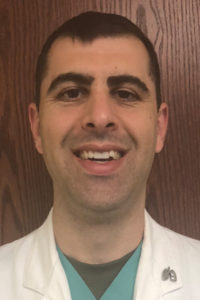
Tubes, glues, patches, and values are just a few of the tools David M. Ferraro, MD, FCCP, and a multidisciplinary panel will review to treat persistent air leak (PAL) from pneumothorax during a case-based session.
The first goal of the session, Tubes, Glues, Patches, and Valves: What’s in the Toolbox for Management of Persistent Air Leaks? on Wednesday at 7:30 am, is to define PAL, which is a hole in the lung that persists more than five days, and is commonly caused by pneumothorax from underlying lung disease or recent lung surgery. Since the management options are so wide, Dr. Ferraro and his colleagues will review different ones that might cater more to a pulmonologist, intensive care doctor, or a surgeon.
“There’s a long list of options, and they range from very simple to very complex,” said Dr. Ferraro, chair of the session. “I think the important part of the session is that no one person really has the skill set to do all of the treatment options. When you’re managing a complicated patient with a problem like this, you have to have a team approach. You need to understand who has what skills and ultimately figure out what the best solution is for the patient. Sometimes you’ll try one thing, and it doesn’t work, and then you’ll try another, and usually you then begin to increase your invasiveness for next procedural attempt to fix the PAL.”
Dr. Ferraro will start by reviewing minimally-invasive procedures and proceed to more invasive procedures. One treatment option is to put in a chest tube, which evacuates the air from the lung and gives the patient time to heal the lung on its own. The panel will review other techniques, such as endobronchial valves, which can be inserted in the affected airway by performing bronchoscopy, a method called a blood patch, and pleurodesis, to name a few.
“With pleurodesis, we can instill different types of chemicals, solutions, or powders into the chest cavity through the chest tube if we think that is a reasonable approach,” he said. “But it doesn’t actually fix the hole; it just glues the lungs so they can’t collapse anymore.”
The last option, and often most invasive option, is surgery, Dr. Ferraro said. The problem with some of these options is the risk for complications from a particular treatment option, or complications from simply waiting for a long period of time and doing nothing. For example, leaving chest tubes in for a long period of time gives the patient more opportunity to develop problems such as blood clots or pneumonia from prolonged stays in the hospital.
Dr. Ferraro said the panel will review cases and present patient details, including what type of pneumothorax and how long the leak has been going on.
“Then we’ll stop, and we’ll have a poll for the audience asking what they would want to do next,” he said. “Based on what the audience chooses—even though we know what our answer is and what we’ve already done for the patient—the expert will review all of the listed management options. In the end, we hope the audience will learn about a few more treatment options for PAL, tailor those therapies to the individual patient, and recognize that a multidisciplinary team approach is best.”





